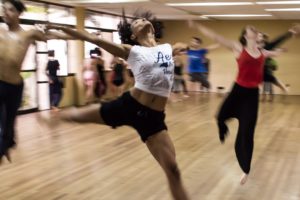This is an interview with Professor of Organisational Psychology, Almuth McDowall, that appeared in One Dance Magazine UK.
Jessica Lowe spoke to former classical ballet dancer, Almuth McDowall, Professor of Organisational Psychology at Birkbeck. Almuth specialises in diversity and inclusion, occupational health psychology and professional competence at work.
In your experience and work, how might a neurodiverse dancer be experiencing dance differently to someone who is ‘neurotypical’?
Can I start by clarifying what we mean by ‘neurodiversity’? The term originates from the work of hugely influential sociologist Judy Singer. Her writing argued to frame all human functioning as biodiversity, including how we think, feel and act. There are conditions (or neurominorities, or neurotypes) that make people different, such as autism, dyslexia, attention deficit hyperactivity disorder (ADHD) or mental health issues. Judy’s work encouraged everyone to look at strengths, not just deficits. I suspect that many dancers are ADHD-ers – hands up who was sent to dance school because they would not sit still? A dancer who has a different neurotype might be particularly good at experiencing the world in a sensory way – hearing music differently or more poignantly, having a real need to express through movement and not through words.
From your own work, can you give some examples of how the dance sector can be thinking about, and accommodating neurodiversity?
A good place to start is your own observations – how do you observe that dancers are doing their best work? What are good practices that help everyone? One of the features of a neurodivergent mind (although I don’t like this word too much!) is great sensory sensitivity. A cluttered, noisy studio where music mixes with voices can be distracting. A calm environment with good lighting benefits everyone. Regular breaks are important, too, as is giving people the opportunity to take solitary time out – their social batteries might be empty.
Our research shows that there is a big gap between what people think neurodiversity is, and what it means in practice. Take the example of dyslexia. Most think that it’s about reading and writing difficulties. We find common challenges are forgetting things, self-organisation and managing stress levels. So, a holistic approach to dance and education is vital. We should ensure that dance educators and leaders have some knowledge and know when to consult professionals as appropriate.
What advice would you give to those seeking to make their dance business, school, or organisation more inclusive and accessible for neurodiverse dance students or professionals? Where might somebody start?
- Engage a specialist for introductory training.
- Don’t make assumptions about why someone is not performing – forgetting a rehearsal time might not mean they don’t want to do it; perhaps their mind finds it hard to remember.
- Put genuine inclusion at the heart of your practice. What benefits neurodiverse dancers benefits everyone.
- Ensure that you canvass what people’s needs are and listen attentively. Commit to action plans and put these into practice.
- Remember your legal obligations – the Equality Act 2010 says that when someone reports a protected characteristic (and several neurodiverse conditions are recognized disabilities) then the environment must adapt to the individual. Not the other way around.
In your experience, what might be some simple approaches that we as a sector could adopt to better accommodate people’s individual differences?
Greater schedule flexibility, both formally and informally, paired with clear communication and considered scheduling of work. Often, rehearsal times are changed at short notice, and casting decisions announced with little lead time. Our research has shown that this needs careful consideration to make the sector more inclusive.
What kinds of support are available for dancers who suspect they might be neurodiverse?
It can be difficult as an adult to get a diagnosis, as waiting lists on the NHS are long. Think about a private diagnosis – might your employer or school even pay for this? An alternative consideration could be a cognitive assessment to profile your strengths and weaknesses. This is done by a psychologist. They can recommend onward referrals, and specialist providers will link in with government schemes such as ‘Access to Work’ (see link below). A few sessions with a specialist workplace strategy coach can be beneficial.
I am less keen on some of the self-diagnostic tools out there (although we are developing a better one!) and please all be cautious with non-professional mental health advice on TikTok!
Further information
- Find out more about Birkbeck’s Centre for Neurodiversity at Work
- One Dance UK’s free resource on Considering Difference
- Study in the Department of Organisational Psychology


I love how this blog emphasizes the importance of embracing neurodiversity in the dance community. It’s inspiring to see the efforts made to create an inclusive environment for dancers of all abilities. Thanks to the author for promoting diversity and accessibility in the dance world!